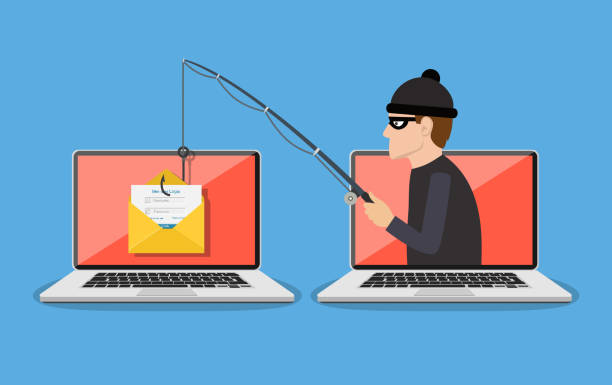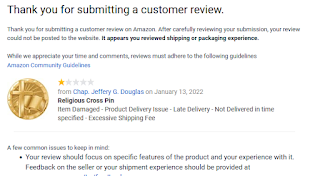Phishing Emails/SMS
Phishing is a tactic that sneaky scammers use to tricking
you into providing your personal information such as your passwords, credit
card numbers, or social security details. They do this sneaky thing by
pretending to be someone you trust, such as your bank, a popular website, a
colleague, family, and worse, government agent by sending emails, SMS messages,
or by using pop-up ads that look totally legit as bait.
I have very good news!!! You can spot these sneaky phishing attempts if
you know what to look for and the Red Flags involved to help keep a look
out for and in mind:
- Strange
Sender Address: Check the email address because Scammers often use
addresses that look real but have slight misspellings or odd domains. An example
of misleading or fake domain. Almost everyone knows about Amazon.com this example
of a look-a-like domain is arnazon.com. NOTICE the “M” has been
replaced with lower case r “R” and n “N” to look like a M > rn.
- Urgent
Language: You get any message that says you need to act fast because
“Your account will be locked or suspended!” or contact this number to reverse
charges or emails that appear to be from the business you have been
dealing with you’ll want to take a step back because a legit company
usually don’t pressure you in that manner.
All my domain names have my name within and may contain number(s) at the end like JGDouglas.net or JefferyGDouglas###. The first domain is an abbreviation of my first & middle name while the other domain contains my whole name. Both can be scammed a little bit. JGDauglas or JeffreyGDouglas to appear to have come from me when they had not. - Generic
Greetings: Emails and SMS that starts with “Dear Customer” instead of
your name is a Red Flag because real companies &
individuals usually address you by name. Specially if you’ve done business
with them. While I may use “Dear Customer,” the software I use attaches a legitimate
way to opt-out and gives you full detail as to the sender. The new software
I now use, if your name is in the name fields, it will send “Dear (Your
Name,)” if not, it will use the email address listed instead “Dear example@example.who.”
- Suspicious
Links: I would also hover over any links before clicking because the
URL may look odd or doesn’t match the company’s website, best not to click
it because is could contain malware. Let say an SMS or Email appears to have
a link to Amazon.com.
Hover over Amazon and see what you get. YES! That is my legitimate website link disguise
to be Amazon.
- Attachments:
I’m always wary of unexpected attachments if I’m not looking or waiting
for one because they could contain malware that can compromise your device
and information.
Ways to Protect Yourself
There is a way that you can protect yourself from sneaky scams with a few simple
steps to follow:
- Think
Before You Click: Did you receive a suspicious email or SMS message by
taking a moment to think. Check to see if it is something you were
expecting. If not, don’t click on any links or download any attachments because
they may contain malware.
- Verify Information:
Are you unsure, then contact the company directly using a phone number, website or email you know is real and associated to them and not the contact
info in the suspicious message provided.
- Use
Strong Passwords: Ensure that your passwords are unique and complex because
we tend to use information we remember and so do sneaky scammers. I would consider
using a password manager to keep track of them all with a master password
that you only one other knows.
- Enable
Two-Factor Authentication: Add Two-Factor step if available because this
is an extra layer of security. It can also “Alert You” if someone does get
to your account, but should stop them at that point. Even if someone gets
your password; they won’t easily access your account without that second
layer of verification.
- Keep
Your Software Updated: With regular updates will help protect you from
vulnerabilities that scammers might exploit in the older version or any
patches that were added it repair a potential breach.
- Educate
Yourself: By staying informed about the latest phishing tactics sneaky
little scammers are now using. Because the more you know about them, the
harder it will be for scammers to trick you.
- Stay
Alert to Evolving Techniques: With the explosive rise of AI use,
phishing attacks are becoming more sophisticated and the scammers can
craft more convincing messages that are getting harder to detect, always
remain vigilant and trust your instincts.
If you suspect you’ve fallen victim to phishing, don’t
panic! Here’s what to do:
- Change
Your Passwords: If you feel that your account is or has been compromised,
change your passwords immediately and if you can change username, I would
consider that also.
- Alert
the Company: Immediately and notify the institution also so they can
check for mischief activities in that account. They may also monitor it
for a few days or a month or two as well. Let the institution know that
you received a phishing attempt so that they may be able to aid or
investigate further even if it failed.
- Monitor
Your Accounts: By keeping an eye on your bank and credit card
statements for any suspicious activity or sudden changes. If they provide notifications,
enable them so that you’ll receive an Email or SMS Notice of any activities.
- Report
It: Always report phishing attempts to the Federal Trade Commission
(FTC) and the institution involved so they can investigate as well. If
you received an SMS, forward it to the Spam Center at 7726 by using the
Block & Report feature on your phone.
Wrapping Up;
Phishing like any other life expectations,
can happen to anyone, and with a little knowledge and awareness, you can
protect yourself from those sneaky scams lurking in your Emails and SMS. When
you are staying vigilant and following tips, you will always be one step ahead
of the attempts used by scammers. Bare in mine, it’s always better to be
cautious than to regret it later.
Explore the solutions and more to
take proactive steps towards comprehensive cybersecurity.








Comments
Post a Comment
Thanks for you Comment. Please visit my website JGDouglas.net